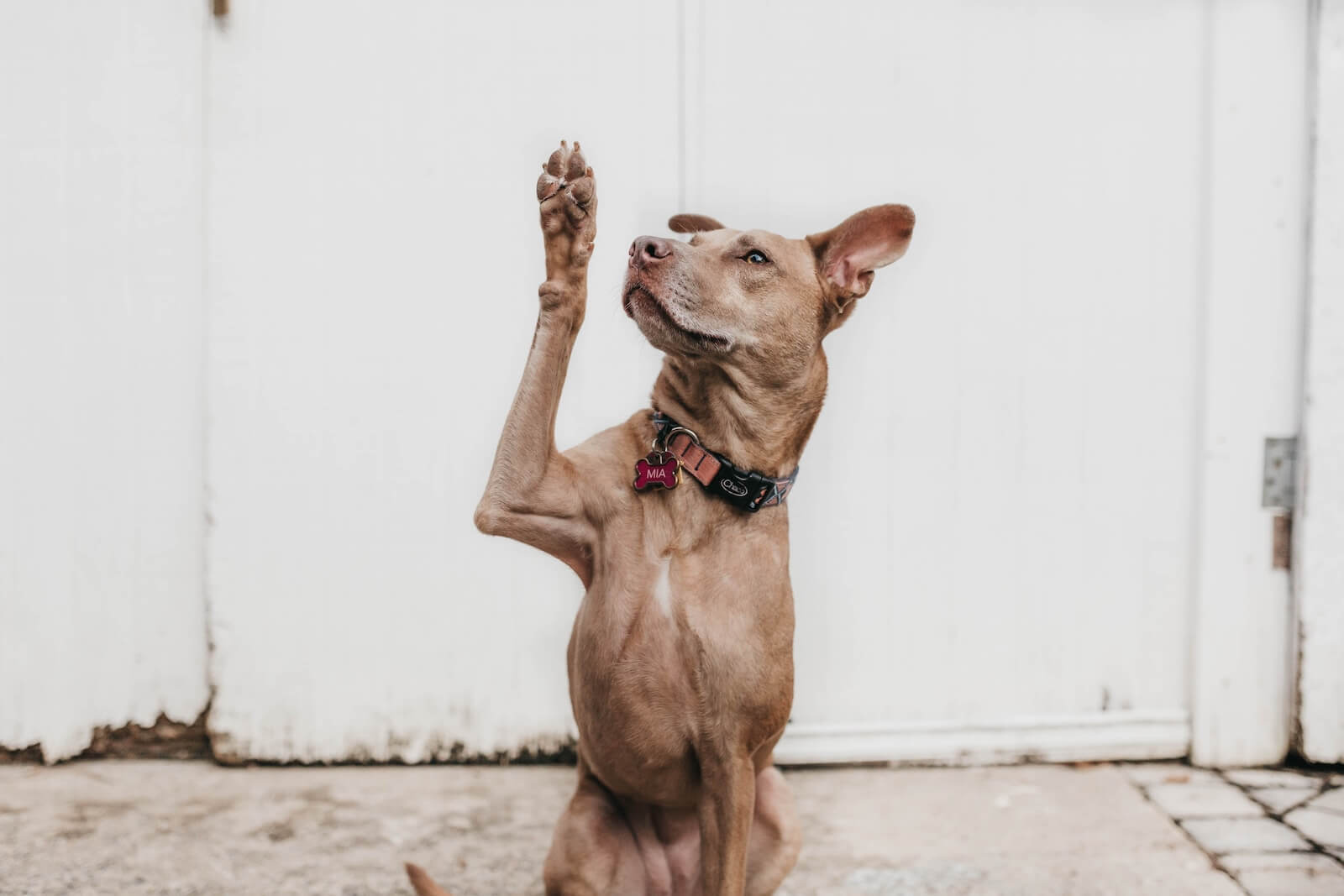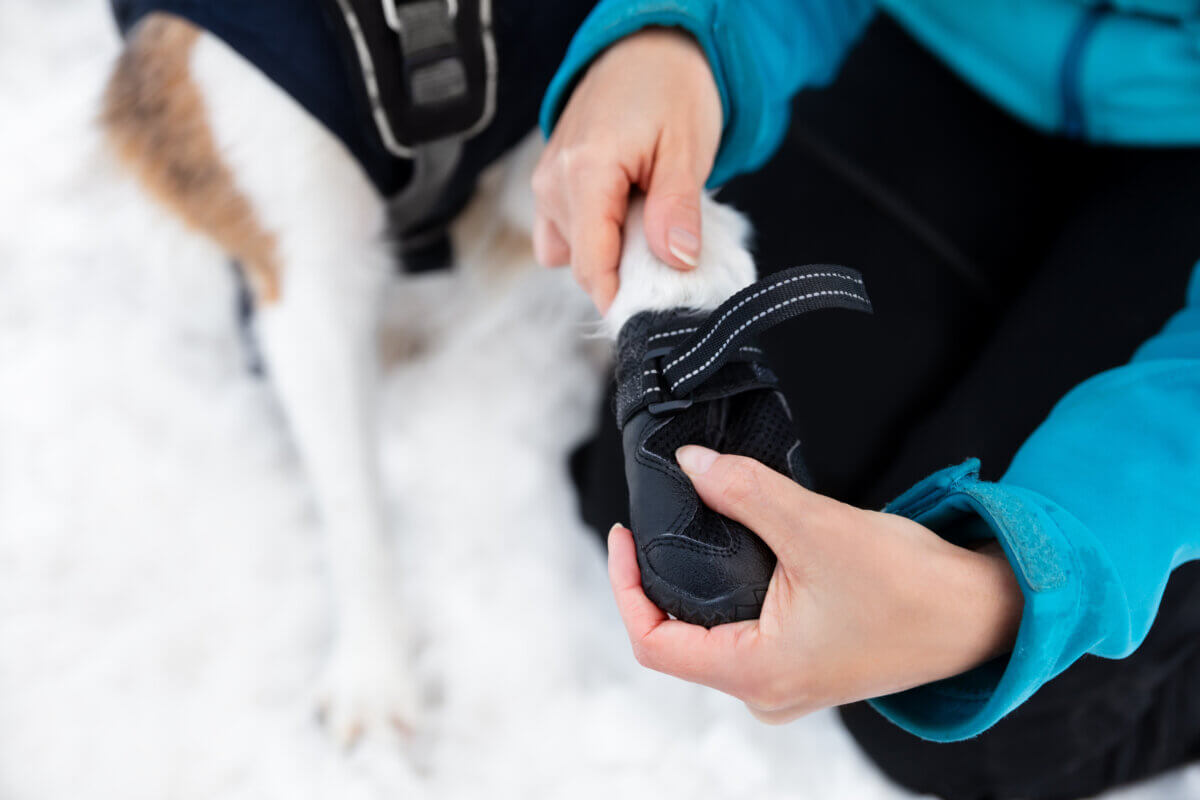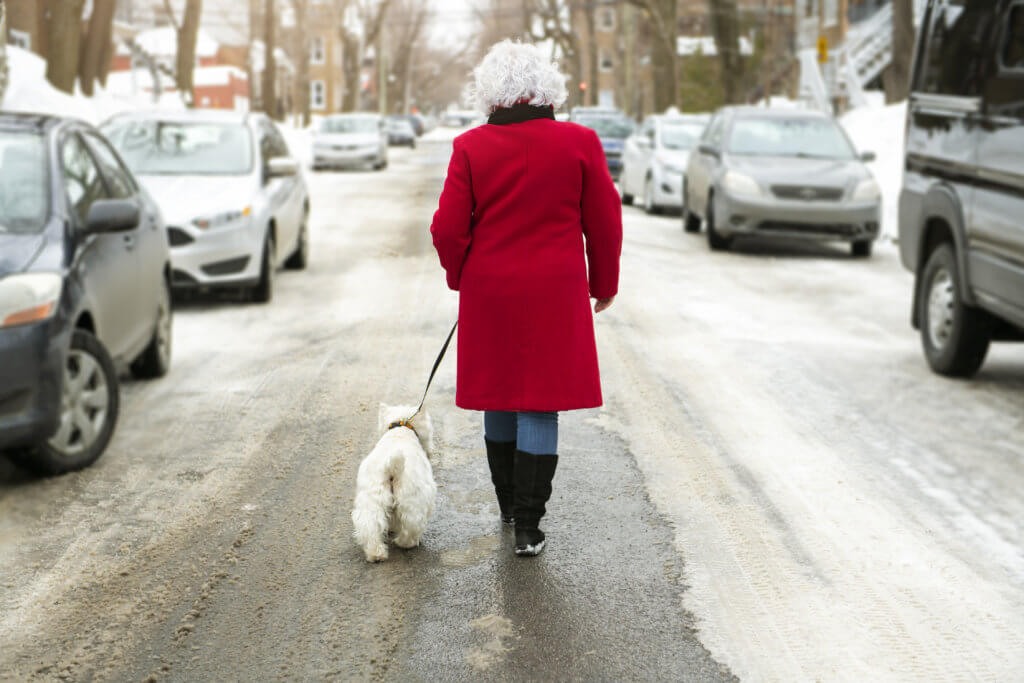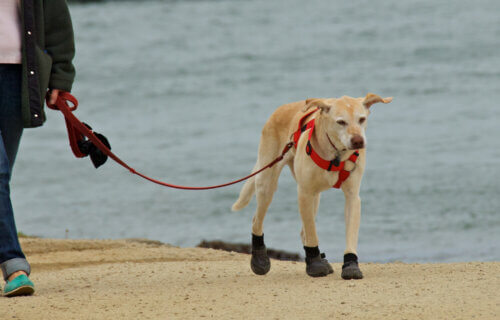Dog booties are more than just a fashion statement for spoiled pups. From burning-hot sidewalks in summer to freezing-cold driveways in winter, plenty of dog owners choose to cover their best friend’s paws while outside.
While many people might think this is just a great way to keep a dog’s paws from getting dirty, it can mean a lot more than you think to their health — and even their owner.
Here are some of the key factors to consider when it comes to using booties at any point of the year.
Routine care and prevention
Know your dog’s paws. By examining them once a week, you’ll know what your dog’s paws look like and how they feel when they’re healthy. That way, you’ll know when something changes and needs attention.
Dogs are very sensitive about having their paws touched, so be gentle. Wait until he or she is worn out from a long walk or exercise, or is getting belly rubs. You’re looking for lumps and bumps, scrapes and cuts, foreign objects, infections, and corns (hard skin build-up.) To examine a paw, hold it in one hand, between your thumb and forefinger, and gently massage it. If you wash your dog’s paws after daily walks, that’s another good time for very quick check-ups.
Regular paw checks are also beneficial for desensitizing your dog to having their paws handled. This makes nail trimming and paw injuries much less traumatic for both of you. There are times you should check your dog’s paws immediately, such as after walks in tall grass or wooded areas. Look for ticks, thorns, infections, seed balls, cuts, blisters, and abrasions.

Health Protection
Dog booties can be important health protection from numerous diseases for your dog (and you, by transmission). The most likely, and alarming, disease may be Lyme disease. The potential diseases are too many to list here, but you’ll find dog-to-human disease transmission covered at the Centers for Disease Control and Prevention (CDC) website.
Many dog owners are especially careful about areas with heavy dog traffic. At dog parks, rest stops, and gas stations, countless dogs are relieving themselves. Go for the boots!

Winter paw protection
Although extremely cold surfaces are not as dangerous for your dog’s paws as extremely hot surfaces, they can still injure your pet’s paws. The risks are:
- Frostbite: Dogs that usually live indoors are vulnerable to frostbite if they spend much time walking on ice or snow. Dampness, such as chilly rain and sleet, increases the risk of frostbite.
- Cuts/abrasions: Sharp ice shards can cause deep cuts and abrasions.
- Injuries: A lack of traction on ice makes both you and your dog vulnerable to slips, falls, strains, sprains, and possibly fractures.
- Chemical burns: De-icers with salt or other chemicals can irritate and burn tender tissue on the paws. Your dog should not walk on them with bare paws.
- Poisoning: If your dog licks chemicals off their paws they can get indigestion. Larger amounts can be fatal.
- Pain: Clumps of snow between the toes and in the fur around the paws can be painful.

Boots are the best way to protect your dog’s paws
Dog booties are more than a trend – they are protection. More and more pet parents are using boots daily for the outdoors, whatever the temperature and weather.
There are even booties for dogs that protect hardwood floors. Like human winter boots, dog boots protect your best friend’s feet. They minimize contact with harsh salt or chemicals and prevent snow, ice, and salt or sand from getting lodged between their toes.
Booties are the safest option, but it may take your dog some time to adjust to them. Most dogs don’t like the feel of shoes or boots. Start by allowing your dog to walk around the house or yard while wearing the booties, and be sure to reward them with dog treats while they get accustomed to their new wardrobe. You can also impress your pup with the celebrity status of booties. No dog in the Iditarod would be caught without the finest footwear! In fact, it’s mandatory.
Only use boots that fit well. Properly fitting booties stay in place when your dog walks or runs, but aren’t so tight they change your dog’s natural stride. Always check the manufacturer’s guidelines for size, and measure before you order. Velcro straps for adjustment are a helpful feature. There are guides for measuring paw size for booties available online.
The sole should be flexible so your dog can walk naturally. The sole should also be textured, with a good gripping surface for traction. In cold weather, the material should be waterproof or water-resistant. In warmer weather or on hot surfaces, the material should be breathable, because dogs sweat through their paws. If your dog is especially sensitive, use dog socks. They provide extra warmth, as well.
Paw balm is another good item to have on hand, for protection and for soothing cracked paws. The American Kennel Club also has a recipe to make your own paw balm.
You might also be interested in:
- Should dogs sleep in the same bed with you? Medically, the answer is no
- Best Dogs For City Living: Top 5 Breeds Most Recommended By Experts
- Best Dog Beds For Your Pup In 2023: Here Are The Top 5 Most Recommended By Pet Experts

